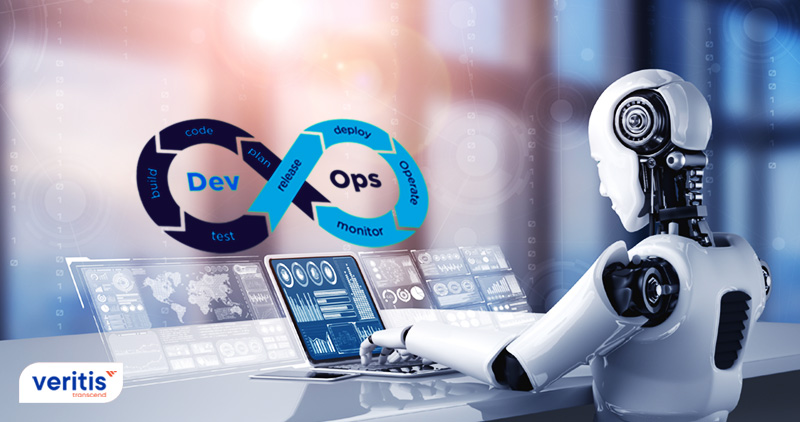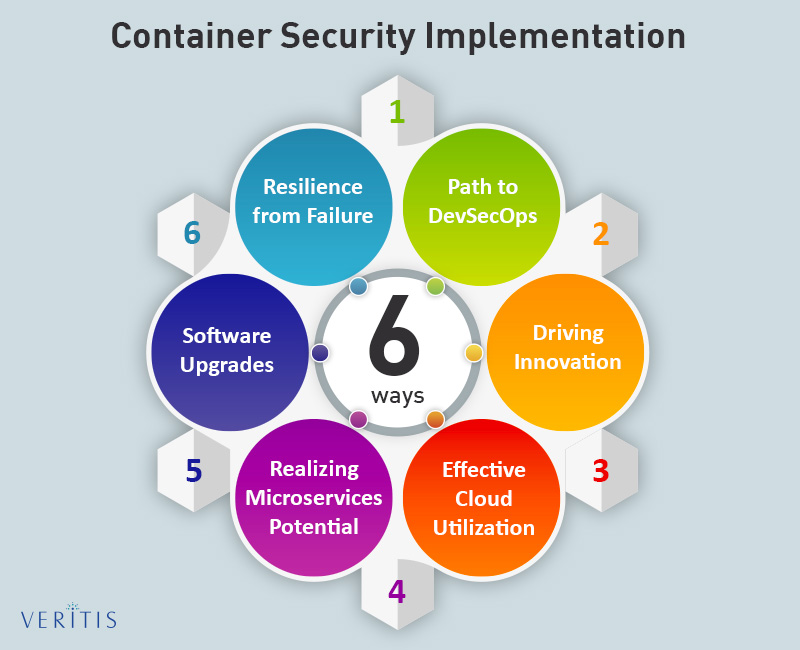
Security is one aspect most spoken about in today’s IT environment, despite the advent of technology solutions that drive innovation and speed up delivery.
Though solutions like DevOps have filled some internal gaps within SDLC and contributed to continuous delivery, security remained a concern moving organizations to brainstorm more on ‘Secure DevOps’!
In the process, many DevOps professionals got the security in design, but only a few could successfully implement the same in the code pipeline.
As the surveys show, many IT organizations report a lack of security best practices and relevant knowledge required for implementing the same.
Integrating security into the application life cycle is not easy and shouldn’t be at the cost of compromising delivery speed. Then, how do you do that?
Containerization Answers!

Automated security features associated with container architecture help a lot in dealing with security concerns. But the success through the container approach purely depends on ‘how you orchestrate’.
Orchestration is crucial to realizing the complete benefits of container security, and container-based microservices can add to achieving the goal of ‘Secure DevOps’ by facilitating automation across the code pipeline.
The future of the enterprise application ecosystem is mostly linked to containerization technology for creating more portable apps, managing workloads, and more.
Container Security in DevOps Environment
Container adoption has many use cases in a DevOps environment.
For instance, container adoption allows independent updates to different service modules without impacting the entire application performance, facilitating continuous deployment in a DevOps environment.
Likewise, there are many common use cases for containerization. However, Container Security, in particular, requires a different understanding.
Here are six important ways that make a perfect business use-case for Container Security in an enterprise:

1) Path to DevSecOps
There are tools that can scale or modify container images in a DevOps environment. While this is an advantage of faster movement, the question, ‘how secure are these container images?’ poses a security risk. Ignoring this aspect is nothing but letting in vulnerabilities to your cloud environment. So, it’s important to have a secure pipeline for continuous integration and delivery of container images.
Orchestrated containerization can make this possible through a set of orchestration tools. Orchestration tools streamline processes for moving secure container images into production and enable continuous testing across the pipeline. Thus, a container environment facilitates the shift to DevSecOps for achieving the secure DevOps objective.
2) Driving Innovation
The container ecosystem provides you with various open-source tools that can drive innovation. Container communities like Open Container Initiative (OCI) have created standardized blocks and sets of best practices for businesses to choose from. This continuous collaboration with the container community paves the way for continuous improvement, simplifies development and maintenance, and allows the core team to focus more on innovation.
3) Effective Cloud Utilization
A container environment helps you in the efficient utilization of cloud resources and capabilities, thus providing scope for realizing key cloud benefits such as agility and cost-savings. Besides offering other key benefits, a well-orchestrated container environment drives harmony in the application infrastructure, scales services on demand, and automates recovery and response.
4) Realizing Microservices Potential
The IT industry is taking a strategic shift from Service Oriented Architecture (SOA) to agile architecture that is built around products rather than projects. Agile architecture or a ‘microservice architecture’ deals with application components rather than ‘application as a whole’. This level of decentralization creates independent entities, speeding up the app delivery cycle and making it easy to scale upon demand.
The container environment is popularly considered as a perfect stage for microservice functionality, while the microservices architecture contributes to container security by dealing closely at the component level.
5) Software Upgrades
Outdated security patches are among key security concerns for many organizations. As the surveys show, more than half of data breaches involve outdated security patches. Despite this scenario, many organizations fail to take adequate measures to control the scenario.
Containerization has a key role here in ensuring agile security. A container environment isolates apps to avoid inter-dependencies that can often lead to vulnerabilities. Moreover, isolated containers can be easily updated without other microservices in the pipeline.
6) Resilience from Failure
Resilience is one key factor that decides business success and is the process that unifies security with business continuity. A resilient infrastructure controls the impact of a failure on operational performance.
Container technology promises a resilient application infrastructure in the cloud and equips the DevOps environment with the capability to roll back insecure containers from production in case of any risks. In the process, rest of the ongoing operations will not get affected. Thus, a container environment ensures resilience and business continuity.
Conclusion
Container technology contributes to the goal of achieving ‘Secure DevOps’, which is key to complete digital transformation. However, realizing the full potential of container services requires a detailed understanding of container security and use cases, which makes the containerization journey complete.
Read More: